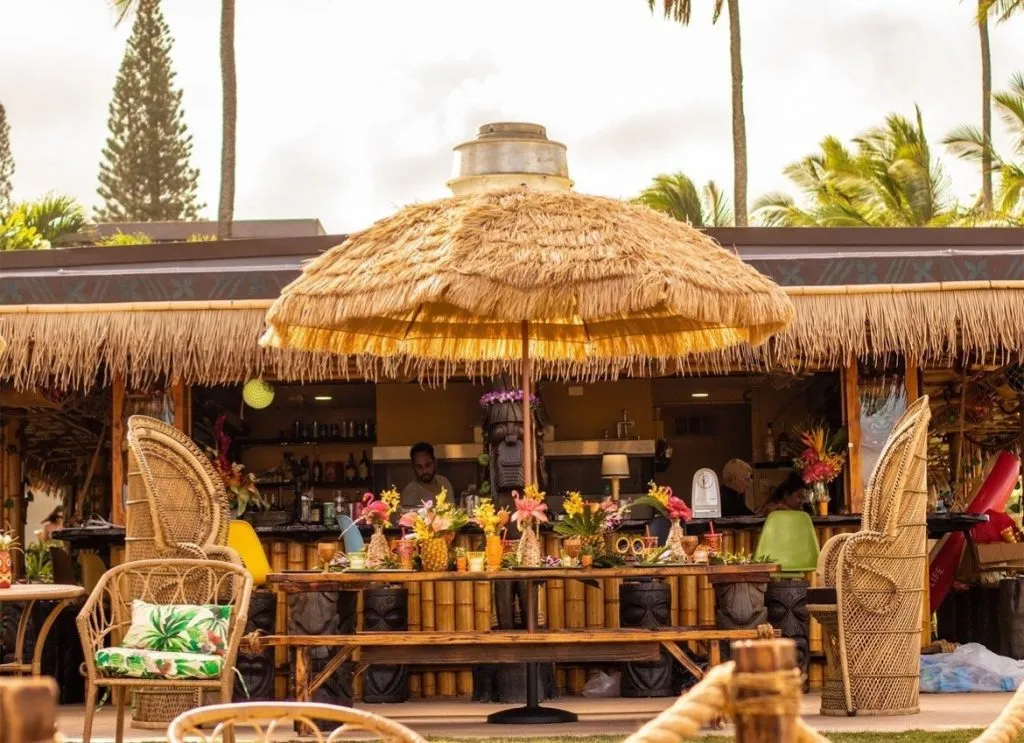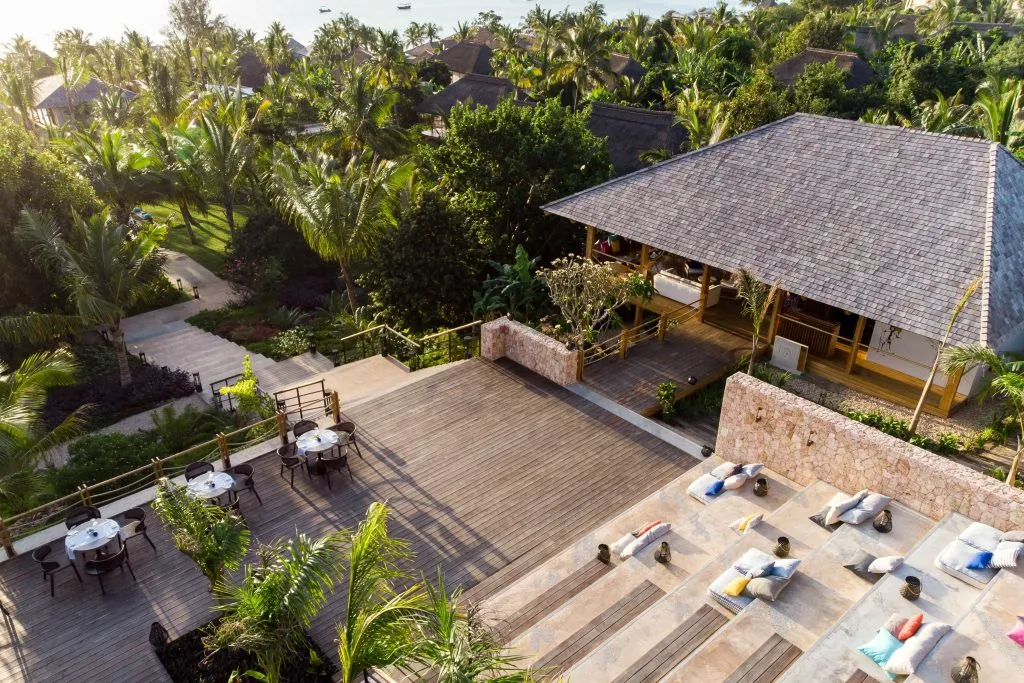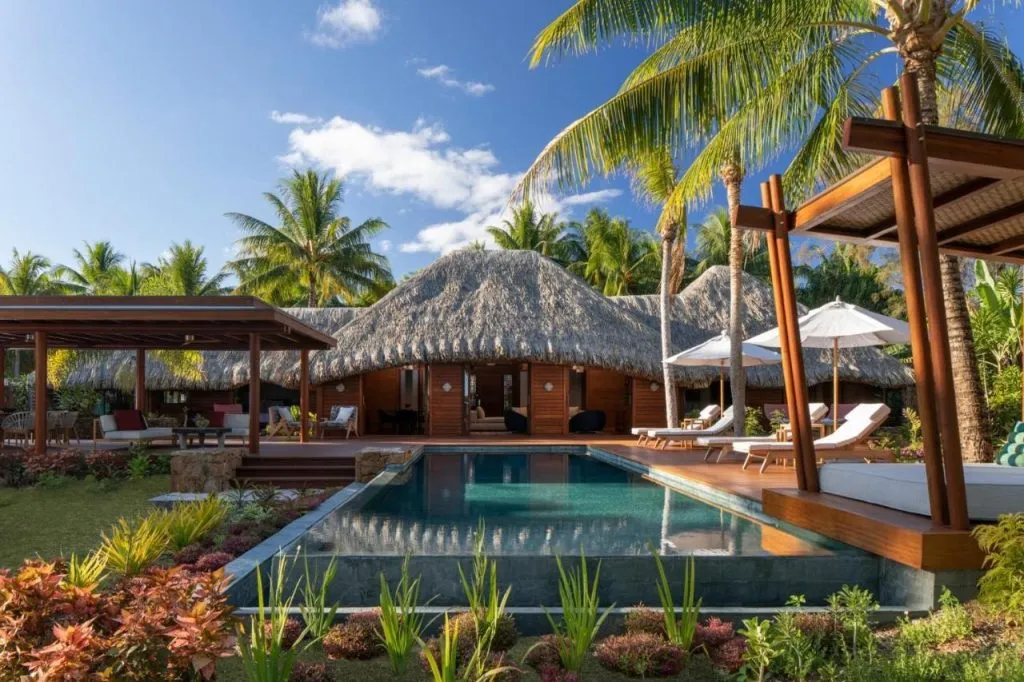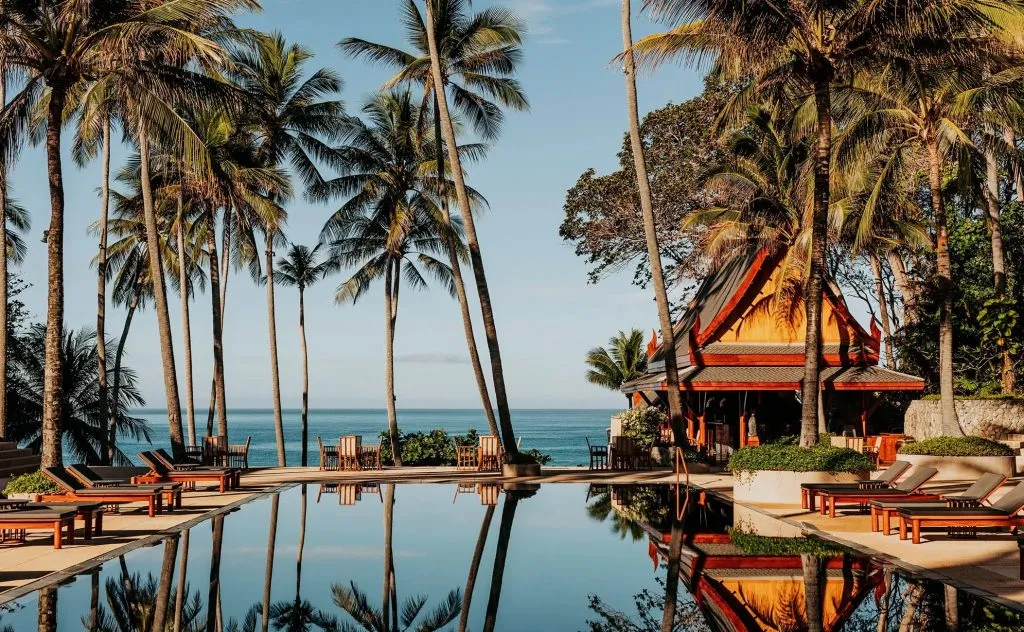Polynesian style, with its distinctive characteristics, has created an unforgettable mark in architecture and interior design, especially in regions like Hawaii. Different from flamboyance or modernity, this style aims for harmony with nature, maximizing indigenous elements to create unique, comfortable, and culturally rich living spaces.
Hawaii, a paradise island in the Pacific Ocean, is not only famous for its stunning natural landscapes but also a convergence of unique architectural works imbued with Polynesian style. From luxurious resorts to traditional houses, this style has breathed life into each construction, creating a living space rich in culture and close to nature. So, what makes Polynesian style so attractive in Hawaiian architecture? Let’s explore these unique features with “Du lịch khắp thế gian” (Travel Around the World).
Polynesian Style in Hawaiian Architecture: A Blend of Culture and Nature
Polynesian style in Hawaiian architecture is not just a design trend but also a crystallization of culture, history, and the natural environment. It reflects respect for nature, community cohesion, and the traditional values of the Polynesian people.
- Connection with Nature: Polynesian architecture always prioritizes the use of natural materials such as wood, bamboo, stone, and coconut leaves. These materials not only bring a rustic, close-to-nature beauty but also help buildings blend in with the surrounding landscape. Designs often maximize natural light and ventilation, creating airy and cool living spaces.
- Cultural Elements: Decorative motifs on Polynesian architectural works are often inspired by indigenous cultural elements such as images of gods, sacred animals, and traditional symbols. These motifs are not only aesthetic but also stories about the history, legends, and beliefs of the Polynesian people.
- Sustainability: Polynesian style always emphasizes sustainability in design and construction. The use of recycled materials, energy saving, and environmental protection are important factors in this style.

Distinctive Features of Polynesian Architecture in Hawaii
Polynesian architecture in Hawaii possesses unique features, creating a difference compared to other architectural styles.
- Steep Roofs: Steep roofs are a recognizable feature in Polynesian architecture. Steep roofs help rainwater drain quickly while creating airy spaces inside. Roofing materials are often coconut leaves or other natural materials.
- Open Spaces: Polynesian architecture prioritizes open spaces, connecting the inside and outside. Common living areas are often designed to be spacious, airy, with many windows and doors to welcome natural light and wind.
- Use of Natural Materials: Wood, bamboo, stone, and coconut leaves are the main materials used in Polynesian architecture. These materials not only bring natural beauty but also help buildings blend in with the surrounding environment.
- Decorative Motifs: Decorative motifs in Polynesian architecture are often inspired by indigenous cultural elements such as images of gods, sacred animals, and traditional symbols.
- Landscaped Gardens: Landscaped gardens are an indispensable part of Polynesian architecture. Gardens not only bring natural beauty but also create relaxing spaces close to nature.

Typical Polynesian Architectural Works in Hawaii
Hawaii is home to unique and impressive Polynesian architectural works.
- Four Seasons Resort Hualalai: This resort is a masterpiece of Polynesian architecture, with luxurious bungalows nestled amidst stunning natural scenery. The bungalows are built with natural materials, decorated with traditional motifs, and have open spaces connecting with nature.
- Polynesian Cultural Center: This is a must-visit destination for those who want to learn about Polynesian culture. The center includes villages representing different Polynesian cultures, with traditional houses, cultural activities, and unique art performances.
- Pu’uhonua o Honaunau National Historical Park: This is an important historical site in Hawaii, once a safe haven for lawbreakers. The temple is built of stone, with high walls and unique architectural structures.
- Traditional Houses: Traditional Hawaiian houses are simple yet creative architectural works. These houses are built with natural materials, have steep roofs and open spaces, reflecting harmony with nature.

Applying Polynesian Style in Modern Design
Polynesian style is not limited to traditional architectural works but is also widely applied in modern design. Architects and designers have skillfully combined traditional elements of Polynesian style with modern lines, creating unique, comfortable living spaces imbued with cultural identity.
- Use of Natural Materials: Natural materials such as wood, bamboo, stone, and coconut leaves are still top choices in modern design with Polynesian style.
- Open Spaces: Open spaces are still prioritized in modern design, creating a connection between inside and outside.
- Decorative Motifs: Decorative motifs inspired by Polynesian culture are used subtly, creating accents for the space.
- Colors: Natural colors such as green, earth brown, and beige are often used in modern design with Polynesian style.

The Importance of Preserving Polynesian Architecture in Hawaii
Polynesian architecture is an important part of Hawaii’s cultural heritage. Preserving and promoting the values of Polynesian architecture not only helps maintain cultural identity but also contributes to sustainable tourism development.
- Preserving Historical Sites: Historical sites such as Pu’uhonua o Honaunau National Historical Park need to be preserved and restored to maintain cultural and historical values.
- Encouraging the Use of Polynesian Style in Modern Design: Encouraging the use of Polynesian style in modern design will help spread cultural values and create unique living spaces imbued with Hawaiian identity.
- Raising Community Awareness: Raising community awareness about the importance of preserving Polynesian architecture will help create consensus and joint efforts to protect cultural heritage.

Polynesian style in Hawaiian architecture is a harmonious combination of culture, history, and nature. Polynesian architectural works not only possess unique beauty but also reflect respect for nature and the traditional values of the Polynesian people. Preserving and promoting the values of Polynesian architecture is an important mission, contributing to maintaining cultural identity and developing sustainable tourism in Hawaii. Come and feel the unique beauty of Polynesian architecture in Hawaii, where culture and nature blend together, creating a living space full of inspiration and meaning.